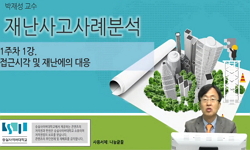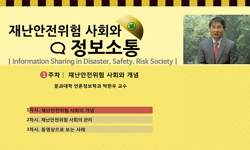This study is concerned with the artisitc influence of the Black Death by focusing on one of the most complex imagery of Trecento art, Orcagna’s Tabernacle in Orsanmichele. It argues that Black Death or Plague occurred in 1348 caused huge confusion ...
http://chineseinput.net/에서 pinyin(병음)방식으로 중국어를 변환할 수 있습니다.
변환된 중국어를 복사하여 사용하시면 됩니다.
- 中文 을 입력하시려면 zhongwen을 입력하시고 space를누르시면됩니다.
- 北京 을 입력하시려면 beijing을 입력하시고 space를 누르시면 됩니다.
https://www.riss.kr/link?id=A82658859
- 저자
- 발행기관
- 학술지명
- 권호사항
-
발행연도
2011
-
작성언어
Korean
- 주제어
-
등재정보
KCI등재
-
자료형태
학술저널
- 발행기관 URL
-
수록면
139-168(30쪽)
- 제공처
- 소장기관
-
0
상세조회 -
0
다운로드
부가정보
다국어 초록 (Multilingual Abstract)
This study is concerned with the artisitc influence of the Black Death by focusing on one of the most complex imagery of Trecento art, Orcagna’s Tabernacle in Orsanmichele. It argues that Black Death or Plague occurred in 1348 caused huge confusion in medieval Europe, and resultantly played an catalytic role in making the relationship of art and society more closely.
Renaissance timely spans identically the period of deadly pandemic from the perspective of the catastrophe of the plague. Therefore, questions arise as to “how widely and compressively the plague made an impact on art?”; “how seriously medieval Europeans tried to revise their attitude of life, having witnessed the endless death?”, “Is it exactly the horrors of the plague behind the art of Renaissance?” Those questions will provide important clues in understanding ‘Renaissance art’ more dynamic way.
Having critically reviewed Millard Meiss’s pioneering study of “Art after the Black Death” in 1954, this study looks into the changes in the pattern of commemoration and charity and the way of ordering art. It has been arguably said that the plague made an immediate impact on iconographic and stylistic change in art. However, it is more certainty in the social way of demanding art where the plague made more long-term impact in art. Ultimately, these changes made structural change in European art.
In conclusion, this study shows how Andrea Orcanga’s Tabernacle in Orsanmichele, Florence, commissioned in 1355 and mostly completed in 1359, demonstrated the expulsive desire of salvation by means of visual arts, in both private as well as collective level. It particularly underlines the role of confraternity in the commissioning art after the Black Death.
목차 (Table of Contents)
- 프롤로그
- Ⅰ. 르네상스 잔혹사-흑사병 충격
- Ⅱ. ‘단절 또는 연속?’-흑사병 이후의 미술
- Ⅲ. 오르산미켈레 성상조각의 탄생
- Ⅳ. ‘양식+도상=신앙’: 〈기적의 성모상〉과 〈오르산미켈레 성상조각〉
- 프롤로그
- Ⅰ. 르네상스 잔혹사-흑사병 충격
- Ⅱ. ‘단절 또는 연속?’-흑사병 이후의 미술
- Ⅲ. 오르산미켈레 성상조각의 탄생
- Ⅳ. ‘양식+도상=신앙’: 〈기적의 성모상〉과 〈오르산미켈레 성상조각〉
- Ⅴ. 흑사병 이후 미술 소비의 사회경제사적 변화
- Ⅵ. 흑사병과 미술 수요의 확대
- Ⅶ. 집단추모와 오르산미켈레 성상조각
- Ⅷ. 결어
- 참고문헌
- Abstract
- 「집단 죽음과 집단 추모: 오르칸냐의 오르산미켈레 성상조각」에 대한 질의
동일학술지(권/호) 다른 논문
-
- 서양미술사학회
- Deborah Barkun(드보라 바쿤)
- 2011
- KCI등재
-
- 서양미술사학회
- 김승호(Kim Seung-Ho)
- 2011
- KCI등재
-
- 서양미술사학회
- 신승철(Shin Seung-Chol)
- 2011
- KCI등재
-
- 서양미술사학회
- 강미정(Kang Mi-Jung)
- 2011
- KCI등재
분석정보
연관 공개강의(KOCW)
-

재난커뮤니케이션 (Disaster Communication)
K-MOOC 국가민방위재난안전교육원 이충현 -

한국의 재난관리체계 (Disaster Management System in Korea)
K-MOOC 국가민방위재난안전교육원 차정회, 국가민방위재난안전교육원 국제협력팀 -

재난관리 리더십과 재난대응 협업 (Disaster Management Leadership and Collaboration for Disaster Response)
K-MOOC 국가민방위재난안전교육원 NDTI International Cooperation Team -

재난사고 사례 분석
숭실사이버대학교 박재성 -

재난안전 위험사회와 정보소통
영남대학교 박한우





 DBpia
DBpia


